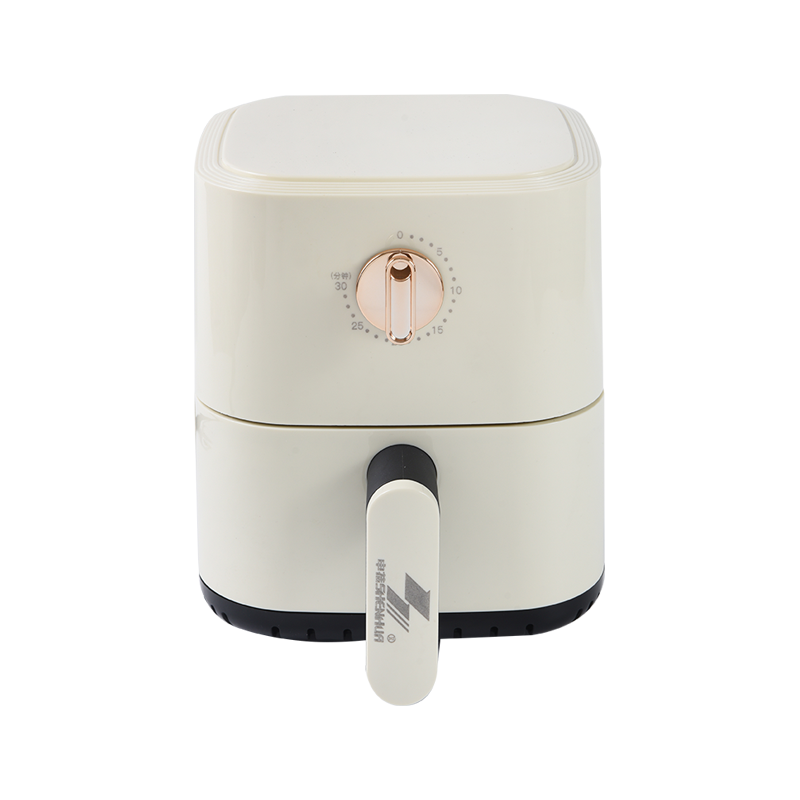1. Capacity: Choose according to the number of family members
The capacity of the air fryer directly affects the cooking experience. If the capacity is too small, cooking needs to be done in batches multiple times, which not only wastes time but also affects the taste; if the capacity is too large, it takes up space, consumes electricity, and even costs more.
Reference capacity selection:
1-2-person family: It is recommended to choose a 2L-3L air fryer, which is suitable for grilled chicken wings, French fries, egg tarts and other snacks. The disadvantage is that it cannot accommodate a whole chicken and the cooking capacity is limited.
3-4-person family: 3.5L-5L is the mainstream choice, which can easily handle a whole chicken or larger portions of ingredients to meet daily needs.
More than 4 people or like to have dinner together: "large-capacity air fryers" above 5L are more suitable, without batch cooking, high efficiency, but large in size, requiring sufficient kitchen space.
Tips:
Before purchasing, you can measure the kitchen countertop space to ensure that the machine can be placed. In addition, large-capacity models are usually heavier and more difficult to move.

2. Power: Affects cooking efficiency and electricity costs
Power is one of the core parameters of air fryers, which directly determines the heating speed and cooking effect.
Common power range: 1200W-1800W.
The higher the power: the faster the preheating, the shorter the cooking time, and the crispier the effect, but it also consumes more power.
The lower the power: the slower the heating, the longer the time, and the more likely it is to cause burnt outside and raw inside.
Recommended choice:
If the power carrying capacity of the household socket is limited, pay attention to power matching to avoid tripping. Generally, pots above 4L are recommended to be above 1500W, so that the cooking speed and effect are better.
3. Functional configuration: smart VS basic
The functional differences of air fryers are mainly reflected in the control method and preset programs.
Basic model:
It uses a knob to manually control the temperature and time, which is cheap and suitable for users with low functional requirements.
Advantages: simple structure, not easy to break.
Disadvantages: manual adjustment is required, and it is easy to burn if you are not experienced.
Smart model:
Touch panel + multiple preset menus (fries, chicken wings, cakes, etc.), some also support reservation function and automatic heat preservation.
High-end models even support Wi-Fi connection, APP control, remote operation, and recipe downloading.
Suitable for people who like to try different dishes and pursue smart experience.
Question: Do you really need so many functions? If you just fry fries and chicken wings, the basic model is enough.
4. Inner pot material: safety and cleaning issues
The frying basket and inner pot material of the air fryer directly affect the safety and ease of cleaning.
Non-stick coating (Teflon):
Advantages: easy to clean, food is not easy to stick to the pan.
Disadvantages: poor scratch resistance, metal brushes cannot be used, and coating damage may affect safety.
Ceramic coating:
Advantages: high temperature resistance, not easy to fall off, relatively safer.
Disadvantages: slightly higher price, less on the market.
Stainless steel material:
Advantages: most durable, no coating concerns.
Disadvantages: food is easy to stick and troublesome to clean.
Suggestion: When purchasing, pay attention to whether it has food-grade safety certification to avoid the impact of inferior coating on health.
5. Is it easy to clean?
The air fryer is used frequently. If it is troublesome to clean, you will become more and more lazy to use it.
Are the frying basket and inner pot removable?
Does it support dishwasher cleaning?
Does the filter design prevent oil stains from accumulating?
Tips for cleaning:
After use, wipe the oil stains with kitchen paper while the pot is still warm, and then wash it with warm water and a soft sponge to avoid damaging the coating with a hard brush.